Chongbin Xu
Precise Analysis of Covariance Identifiability for Activity Detection in Grant-Free Random Access
Jun 03, 2024Abstract:We consider the identifiability issue of maximum likelihood based activity detection in massive MIMO based grant-free random access. A prior work by Chen et al. indicates that the identifiability undergoes a phase transition for commonly-used random signatures. In this paper, we provide an analytical characterization of the boundary of the phase transition curve. Our theoretical results agree well with the numerical experiments.
Receiver Design for MIMO Unsourced Random Access with SKP Coding
Apr 30, 2022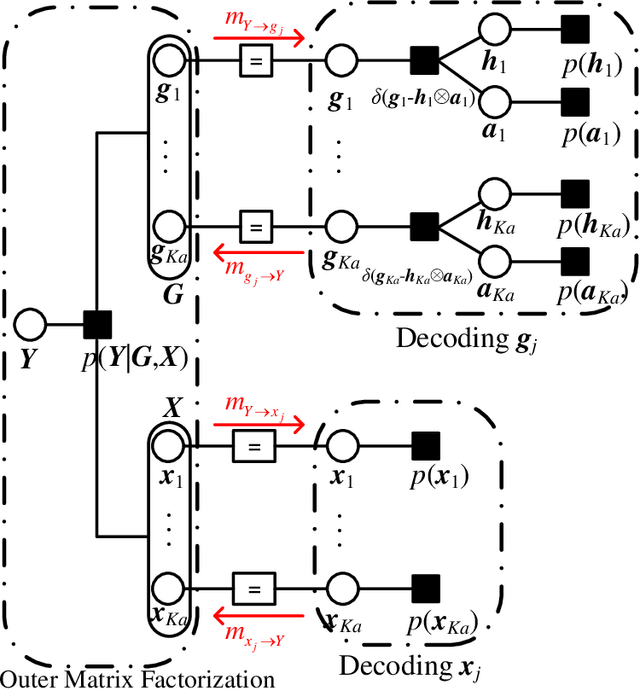
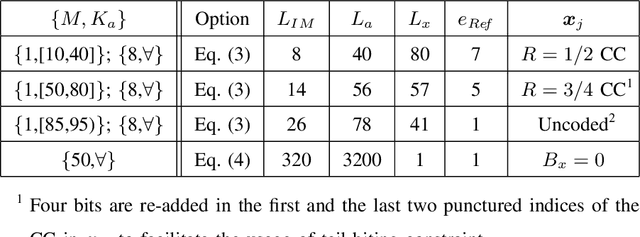
Abstract:In this letter, we extend the sparse Kronecker-product (SKP) coding scheme, originally designed for the additive white Gaussian noise (AWGN) channel, to multiple input multiple output (MIMO) unsourced random access (URA). With the SKP coding adopted for MIMO transmission, we develop an efficient Bayesian iterative receiver design to solve the intended challenging trilinear factorization problem. Numerical results show that the proposed design outperforms the existing counterparts, and that it performs well in all simulated settings with various antenna sizes and active-user numbers.
Sparse Kronecker-Product Coding for Unsourced Multiple Access
Mar 08, 2021


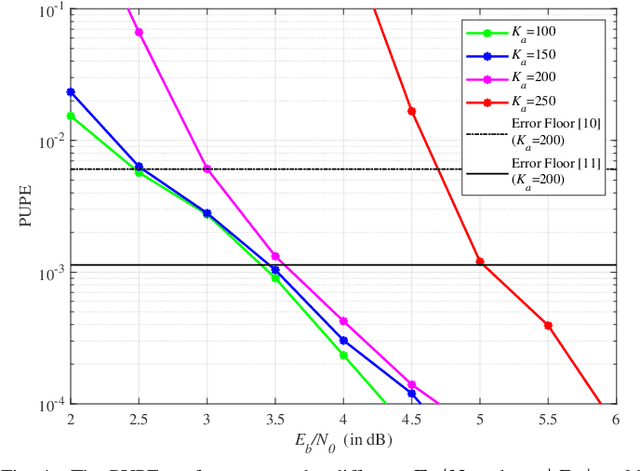
Abstract:In this paper, a sparse Kronecker-product (SKP) coding scheme is proposed for unsourced multiple access. Specifically, the data of each active user is encoded as the Kronecker product of two component codewords with one being sparse and the other being forward-error-correction (FEC) coded. At the receiver, an iterative decoding algorithm is developed, consisting of matrix factorization for the decomposition of the Kronecker product and soft-in soft-out decoding for the component sparse code and the FEC code. The cyclic redundancy check (CRC) aided interference cancelation technique is further incorporated for performance improvement. Numerical results show that the proposed scheme outperforms the state-of-the-art counterparts, and approaches the random coding bound within a gap of only 0.1 dB at the code length of 30000 when the number of active users is less than 75, and the error rate can be made much lower than the existing schemes, especially when the number of active users is relatively large.
Regularized Recovery by Multi-order Partial Hypergraph Total Variation
Feb 19, 2021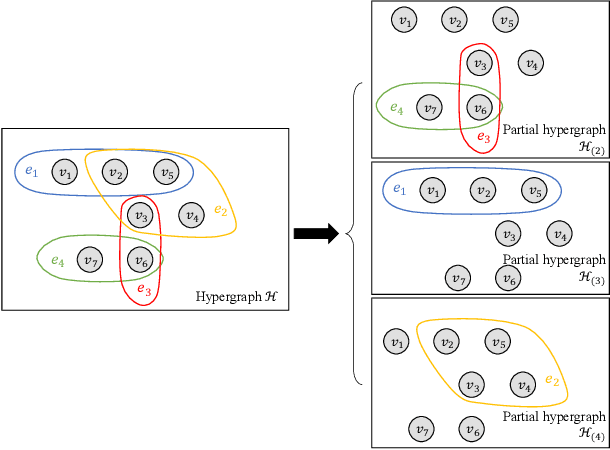
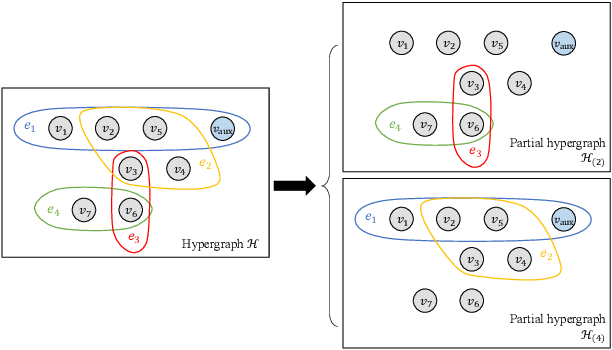
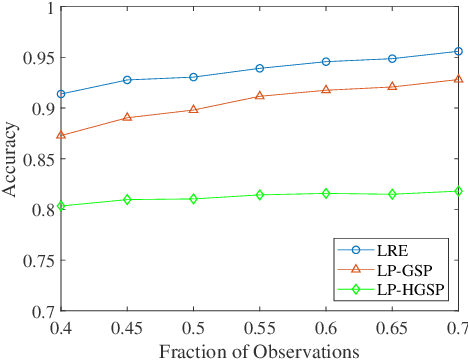
Abstract:Capturing complex high-order interactions among data is an important task in many scenarios. A common way to model high-order interactions is to use hypergraphs whose topology can be mathematically represented by tensors. Existing methods use a fixed-order tensor to describe the topology of the whole hypergraph, which ignores the divergence of different-order interactions. In this work, we take this divergence into consideration, and propose a multi-order hypergraph Laplacian and the corresponding total variation. Taking this total variation as a regularization term, we can utilize the topology information contained by it to smooth the hypergraph signal. This can help distinguish different-order interactions and represent high-order interactions accurately.
 Add to Chrome
Add to Chrome Add to Firefox
Add to Firefox Add to Edge
Add to Edge